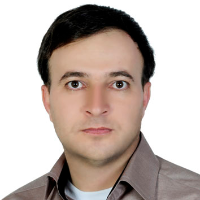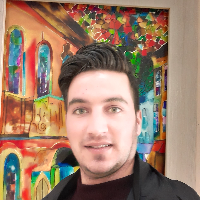Comparison of MPSIC, EPM and BLM models for assessing soil erosion using Kappa statistical coefficient (Case Study: Seymareh chenar watershed)
Soil erosion is one of the important issues in the watersheds of Iran and can be considered as one of the most important barriers to achieving sustainable agriculture and natural resources. This study was conducted to compare the MPSYAK, EPM and BLM models using kappa statistical coefficient to assess soil erosion and sediment production in the Seymareh-e-Charnar catchment area. For this purpose, the position of 90 points of erosion points was determined in a field survey by a GPS device and these points were adapted to the final erosion maps.The evaluation of the results obtained from the models used by the Kappa statistical coefficient shows that the MPSYAK model with Kappa statistical coefficient is 0.91 compared to the APM and BLM models with a kappa statistical coefficient of 0.76 and 0.71 of greater accuracy In assessing the risk of erosion in the Seymareh Chenar catchment area. Also, the results of the overlaying of the final erosion mapwith erosion points showed that in the AP model, 81% of the points in the medium-risk zone, the BBL model had 37% of these points in the medium-risk zone and in the M-PSYAK model 90% of the specified points In the middle danger area.
Therefore, it can be said that the studied area is in the middle erosion class and the M-PSIAC model shows more accurate results for erosion evaluation in this basin. Based on the zoning done using the M-PSYAK model, 7.93, 14.45, 77.62% of the area of the area is located in very low, medium and low risk classes. Also, based on the APM model, 27.44%, 32.16%, 40.40% of the area of the area were in low, moderate, high risk classes, respectively. The results of this model estimated the coefficient of erosion intensity of 0.58 and the total sediment produced during one year was 1921183.6 cubic meters.
Erosion , MPSYAK , EPM , BLM , Seymareh Chenar Watershed , Remote Sensing , GIS
-
Analyzing the Capacities of the Geomorphological Destinations of the Tourist Villages of Garmi City (Case Study: Dashdibi, Khankandi, Qarayataq Villages)
Lotfollah Malekei *, Behrouz Nezafat Taklhe, Sanaz Safaei
Environmental Researches, -
Soil Erosion Hazard Assessment and Its Relationship with Environmental Factors (A Case Study of the Virmooni Watershed, Guilan Province)
Tayebe Babaei Olam, *
Journal of Geography and Human Relations, -
Investigating the lateral erosion of Darehroud river and its classification using Rasgen model (Case study: Horand city - East Azerbaijan)
*, Payam Fateh Elahi, Behrouz Nezafattakle
Journal of Geography and Environmental Hazards, -
Assessment of Morphological Changes of the River Using the Tensile Circles Fit in the GIS Environment (Case study of Kahman Alshart RiverAuthors
*, ,
Journal of Environmental Science Studies, -
Assessment of lateral dynamics of Kahman river channel
Imanali Belvasi, Sayyad Asghari *, Fariba Esfandiari Dorabad, Batool Zeynali
Journal of Geography and Planning,




